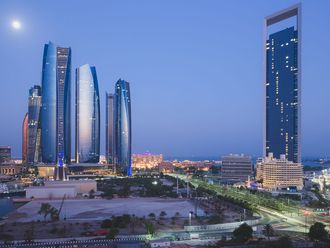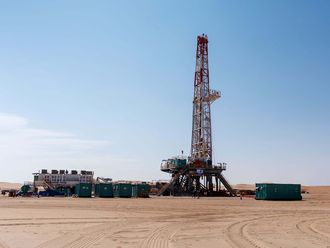London: Five months after sanctions on Iran were eased, the rapid rise in the country’s oil production and exports appears to be ending as quickly as it began.
Any slowdown in Iranian output will hasten the rebalancing of global oil supply and demand, adding weight to the assertion by Saudi Arabia’s oil minister Khalid Al Falih that “the oversupply has disappeared.”
Iran’s observed crude oil exports, which exceeded 2 million barrels a day in both April and May, slipped by almost 20 per cent in the first three weeks of June.
One of the country’s primary aims after restrictions on oil sales were eased was to regain its markets in Europe. Before the latest sanctions were imposed in 2012, Iran was exporting about 600,000 barrels a day of crude to countries in the European Union (EU), with Italy, Spain and Greece its biggest buyers.
By May, Iran had regained more than half of those EU sales, delivering more than 350,000 barrels a day of crude and spurring expectations that flows would soon be back to their pre-sanctions level. Upgrades were also completed at Iran’s principal loading terminal at Kharg Island, allowing it to load nine vessels at a time and store 30 million barrels of crude.
But deliveries fell to 285,000 barrels a day in the first three weeks of June. What happened?
Bloomberg tracks the tankers loading Iranian crude, which allows us to examine in detail where this oil is going.
The big Asian buyers — China, India, Japan and South Korea — remain Iran’s most important customers. But the pattern of sales to Europe is now very different from that seen before the sanctions era.
A strike that shut most French refineries has clearly had an impact. No cargoes were sent there in the first part of this month and three vessels remain anchored off French ports waiting to unload Iranian crude.
But more worrying for Iran is the difficulty that it seems to have had in persuading its biggest pre-sanctions buyers to resume purchases. Italy, previously Iran’s best customer in Europe, loaded its first cargo in mid-June, five months after the restrictions were lifted. Purchases by Spain and Greece are also well below pre-sanctions levels.
Outside Europe, Iran has also struggled to regain customers it lost to sanctions. A delivery to the Tanzanian port of Dar es Salaam in March remains its only post-sanctions sale to Africa, while purchases by US companies are still banned.
There may be a simple explanation for this dip in exports. It could be that Ramadan has had an impact on Iran’s oil industry — although it doesn’t appear to have had a similar effect on exports from neighbouring Iraq. Or, it may be a simple matter of scheduling the tankers to call at Iran’s oil ports — but we are running out of time for a late surge in loadings to boost monthly average exports to May’s level.
If there isn’t, then a slump in output after a short-lived surge will leave Iran producing less oil than analysts had expected in the second half. And that will only help hasten the supply-demand balance so eagerly sought by oil producers.












